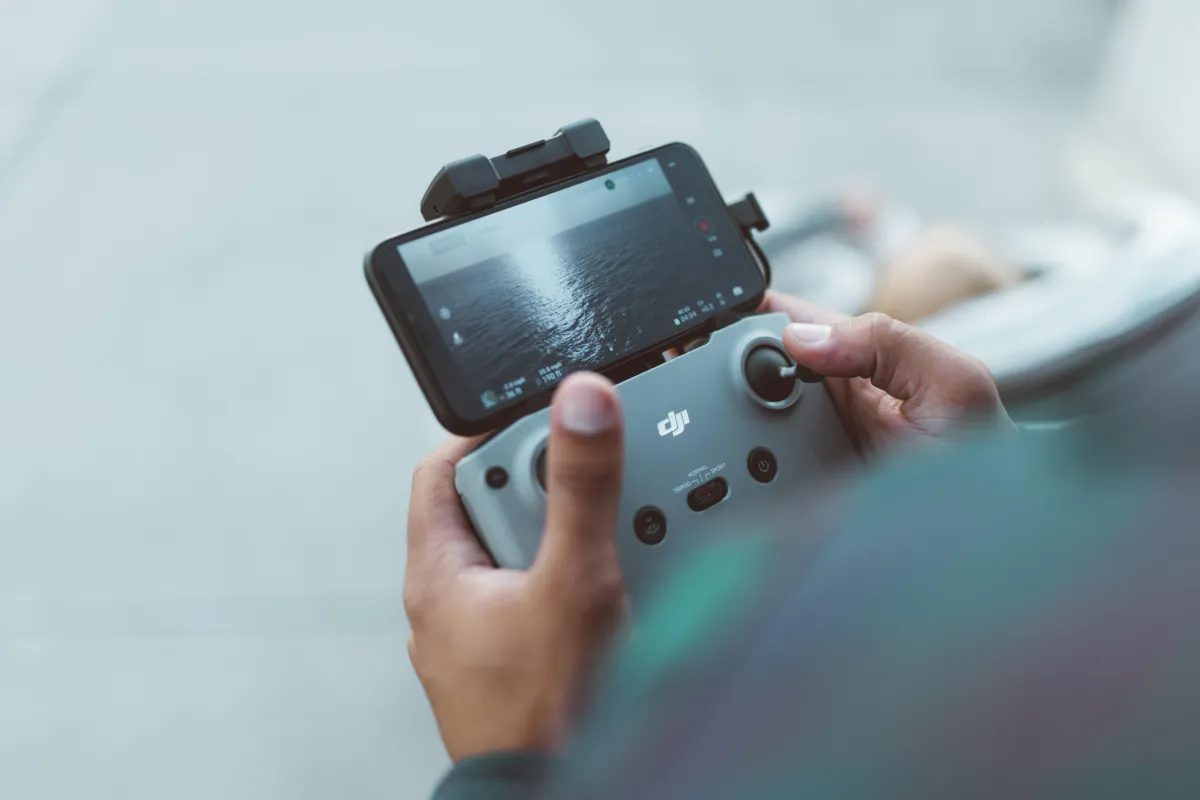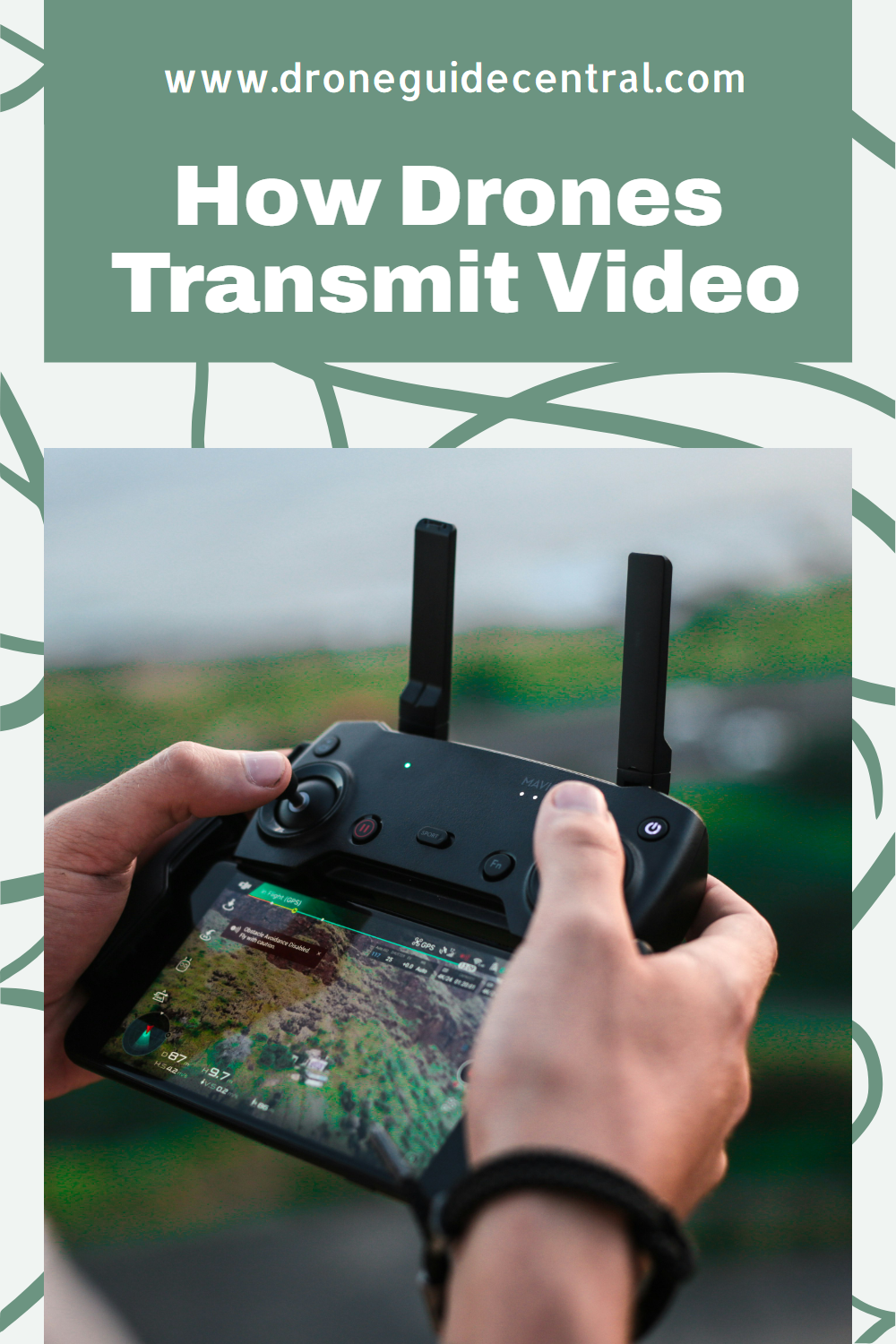
How Drones Transmit Video
As a passionate drone enthusiast, let's delve deeper into the intricate world of drone video transmission. This guide will not only cover the basics of how drones transmit video but also provide valuable insights and tips for enthusiasts looking to enhance their aerial videography experience.
Introduction
In recent years, drones have skyrocketed in popularity, becoming essential tools for capturing stunning aerial footage. The allure of real-time video transmission adds a dynamic dimension to the drone flying experience. In this article, we'll explore the fundamental principles, technologies, and practical advice surrounding how drones transmit video.
How Drones Transmit Video: The Basics of Drone Video Transmission
Understanding Key Components
To grasp video transmission, it's essential to comprehend the key components involved. The camera captures footage, and the video transmitter sends it to a receiver. The receiver is often integrated into a remote controller or a dedicated display device, allowing the pilot to monitor the live feed.
Analog vs. Digital Transmission
Analog transmission, while traditional, is prone to interference and signal degradation. Digital transmission, on the other hand, offers superior video quality and is more resilient to interference, making it the preferred choice for modern drone enthusiasts.
How Drones Transmit Video: Radio Frequencies
Choosing the Right Frequency
Selecting an appropriate frequency is critical for smooth video transmission. 2.4GHz and 5.8GHz are common choices, each with its advantages. 2.4GHz offers a better range, while 5.8GHz provides less interference in crowded areas.
Factors Affecting Signal Strength and Clarity
Signal strength can be affected by physical obstacles, such as buildings and trees, as well as electronic interference from other devices. Understanding these factors helps optimize your drone's signal performance.
Digital Transmission: A Game-Changer
Advantages of Digital Video Transmission
Digital transmission has revolutionized drone videography. It delivers higher image quality, reduced latency, and often supports advanced features like bidirectional communication and telemetry data transmission.
Popular Digital Transmission Protocols
Many consumer drones utilize Wi-Fi for video transmission between the drone and the remote controller or mobile device. Wi-Fi offers ease of use, as most people are familiar with connecting their devices to Wi-Fi networks, and it's readily available in urban and suburban environments.
Advantages
Ubiquity: Wi-Fi is prevalent, making it accessible in various locations.
Compatibility: Most smartphones and tablets support Wi-Fi connectivity, simplifying the setup process for users.
Cost: Wi-Fi technology tends to be more cost-effective, contributing to lower-priced drone models.
Limitations
Interference: Wi-Fi operates in crowded frequency bands, leading to potential interference from other devices and networks.
Range: Wi-Fi range is typically limited compared to other transmission technologies, especially in urban environments with high levels of interference.
Latency: Wi-Fi transmission may introduce latency, resulting in a delay between the drone's actions and the live video feed.
OcuSync is a proprietary digital transmission technology developed by DJI, a leading manufacturer of consumer and professional drones. It is designed to provide a stable and reliable connection between the drone and the remote controller, offering enhanced performance compared to Wi-Fi.
Advantages
Longer Range: OcuSync can achieve longer transmission distances compared to Wi-Fi, allowing pilots to fly their drones further while maintaining a stable connection.
Low Latency: OcuSync minimizes latency, providing pilots with a real-time video feed that closely mirrors the drone's actions, ideal for capturing precise shots and navigating obstacles.
Resistance to Interference: OcuSync operates on less congested frequency bands, reducing the likelihood of interference and ensuring a more reliable connection, even in challenging environments.
Limitations
Cost: Drones equipped with OcuSync technology tend to be more expensive than those relying on Wi-Fi for video transmission.
Compatibility: OcuSync may require proprietary hardware and software, limiting its compatibility with third-party devices and accessories.
Learning Curve: While OcuSync offers advanced features, mastering its setup and configuration may require some learning for inexperienced users.
Why the Difference Matters
The choice between Wi-Fi and OcuSync for drone video transmission ultimately depends on factors such as the intended use, budget, and performance requirements.
Consumer vs. Professional Use: Wi-Fi is commonly found in consumer-grade drones, offering a cost-effective solution for casual users and hobbyists. In contrast, OcuSync caters to professionals and enthusiasts who prioritize reliability, range, and low latency for demanding aerial videography and photography projects.
Range and Reliability: OcuSync excels in scenarios where long-range transmission and minimal latency are essential, such as capturing cinematic footage or conducting inspections over large areas. Wi-Fi may suffice for short-range flights in less congested environments.
Interference and Environment: In urban areas with heavy Wi-Fi traffic and electromagnetic interference, OcuSync's robustness can ensure a stable video feed, whereas Wi-Fi may struggle to maintain a consistent connection.
Transmission Range: Pushing the Boundaries
Factors Influencing Transmission Range
Achieving an optimal transmission range requires considering factors like the power of the video transmitter, obstacles in the environment, and the quality of the receiving equipment.
Tips for Maximizing Range
To extend your drone's transmission range, invest in high-quality antennas, avoid interference-prone areas, and ensure a clear line of sight between the drone and the remote controller.
Interference: Overcoming Signal Challenges
Identifying Common Sources of Interference
Understanding interference sources is crucial. Wi-Fi networks, electronic devices, and even other drones operating on the same frequency can disrupt your video transmission. Awareness helps you plan flights in interference-free zones.
Strategies to Minimize or Eliminate Interference
Choose less congested frequency channels, use directional antennas to focus signals, and keep a safe distance from electronic devices to minimize interference and maintain a stable video feed.
Antennas: Boosting Signal Strength
Importance of High-Quality Antennas
Antennas play a pivotal role in video transmission. Upgrading to high-gain antennas can significantly enhance signal strength, providing a more reliable connection and better video quality.
Upgrading Antennas for Enhanced Video Transmission
Consider aftermarket antennas designed for your specific drone model. Ensure compatibility and follow installation instructions carefully to avoid any unintended consequences on drone performance.
Real-Time Monitoring: Ensuring Quality Footage
Importance of Live Video Monitoring
Live video monitoring during flight is essential for framing shots, avoiding obstacles, and ensuring the overall quality of your footage. Choose a display device that suits your preferences and offers clear visibility.
Choosing the Right Display Devices
Options range from dedicated FPV goggles to tablets or smartphones. Select a device with a bright, high-resolution screen for optimal visibility, especially in bright outdoor conditions.
Weather Conditions: Affecting Video Transmission
Impact of Weather on Signal Quality
Weather conditions can pose challenges to video transmission. Rain, snow, and strong winds may affect signal quality. It's crucial to be aware of these factors and take precautions to protect your equipment.
Precautions and Adjustments for Different Weather Scenarios
Consider using protective coverings for your drone and equipment in adverse weather. Additionally, adjust your flying strategy based on weather conditions to ensure a safe and reliable video transmission.
Security Concerns: Protecting Your Transmission
Encryption and Security Features
Ensuring the security of your video transmission is paramount. Modern drones come equipped with encryption features that protect your feed from unauthorized access. Always enable these security measures to safeguard your footage.
Best Practices for Securing Drone Video Feeds
Beyond built-in security features, adopt best practices such as updating firmware regularly, using strong passwords, and avoiding flying in areas with potential security risks.
Future Trends: Evolving Transmission Technologies
Advances in Drone Video Transmission
Stay informed about the latest trends in video transmission technology. Look out for advancements in protocols, increased transmission distances, and improved resistance to interference.
Predictions for the Future
The future holds promise for even more efficient and robust video transmission technologies. Expect innovations that cater to the growing demands of aerial videography, providing enthusiasts with enhanced capabilities.
Tips for Drone Enthusiasts: Enhancing Video Transmission
Practical Tips for Hobbyists and Professionals
For enthusiasts seeking to elevate their drone videography skills, consider practical tips such as calibrating your equipment regularly, experimenting with different transmission settings, and staying updated on firmware releases.
DIY Modifications to Improve Video Transmission
While manufacturers provide reliable equipment, some enthusiasts enjoy experimenting with DIY modifications. Upgrading antennas or exploring alternative transmission systems can be rewarding, but caution and careful research are crucial.
Common Mistakes: Learning from Experience
Pitfalls to Avoid in Drone Video Transmission
Learn from the experiences of others by understanding common mistakes. Overlooking interference sources, neglecting weather considerations, and not properly maintaining equipment are pitfalls to avoid.
Real-World Examples and Lessons Learned
Explore real-world examples where drone pilots encountered and overcame video transmission challenges. Extract valuable lessons to enhance your own flying experience.
Case Studies: Successful Video Transmission in Challenging Environments
Stories of Triumph
Discover inspiring stories of drones successfully transmitting video in challenging environments. From urban landscapes to remote wilderness, these case studies highlight the resilience and capabilities of modern drone technology.
Key Takeaways from Successful Cases
Extract key takeaways from successful cases, emphasizing the importance of preparation, adaptability, and the right choice of equipment. Apply these lessons to your own drone videography endeavors.
Conclusion
As we conclude this exploration of how drones transmit video, remember that mastery in aerial videography requires a combination of technical knowledge and hands-on experience. By understanding the basics, navigating challenges, and staying informed about evolving technologies, you can truly soar to new heights in your drone flying and videography skills.
FAQs
Can I use any frequency for drone video transmission?
While you have flexibility in choosing frequencies, it's crucial to consider factors like interference and signal strength. The 2.4GHz and 5.8GHz bands are popular choices.
What weather conditions affect video transmission?
Adverse weather conditions, including rain and strong winds, can impact signal quality. Taking precautions and adjusting your flying strategy is essential in challenging weather.
Are DIY antenna upgrades recommended for improving signal strength?
Upgrading antennas can enhance signal strength, but it's crucial to choose quality components and follow best practices to avoid unintended consequences.
How can I secure my drone video transmission from unauthorized access?
Use encryption features provided by manufacturers, follow best practices for securing video feeds, and stay informed about potential security risks in your flying area.
What are the future trends in drone video transmission technology?
Anticipate advancements in protocols, increased transmission distances, and improved resistance to interference. Stay updated on technological trends to leverage the latest innovations in your aerial videography pursuits.
Learn more in publications from ieee.org here and here.

Copyright © Drone Guide Central - All Rights Reserved 2024

